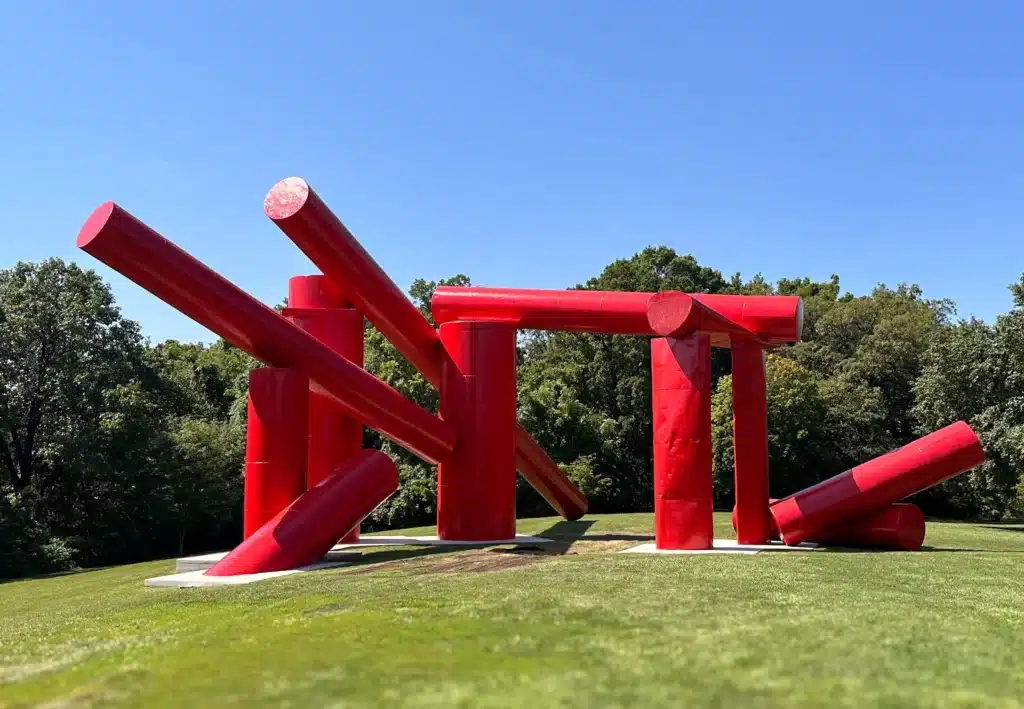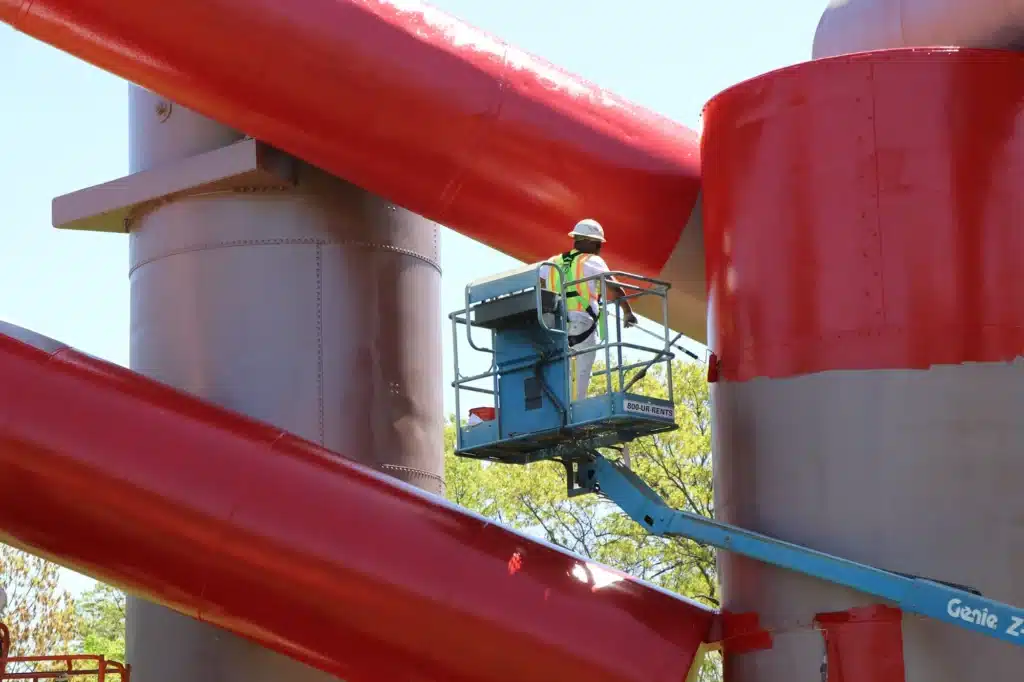Flagship sculpture gleams after restoration project
A flagship sculpture gleams after Carboline supplies the coatings restoration project.
When Carboline was asked to recoat 18 oil storage tanks made of steel – and it has supplied paint for more of these than it can count – the company thought: Normally it’s barely a blip on the radar. However, these 18 tanks are empty and have been for over 44 years, and they are stacked up and welded together to look like a big red partially-collapsed Stonehenge.
The big red partially-collapsed Stonehenge restoration project completed
The oil storage tanks comprise ‘The Way’, the flagship art piece at Laumeier Sculpture Park in Carboline’s home town of St. Louis, Missouri. The company may have made the coatings that protect too many steel tanks to count, but Carboline will never forget these 18.
A “most thorough conservation” restoration needed
“The Way,” created by Ukrainian-American sculptor Alexander Liberman, was installed at the park in 1980. At 65 ft (20m) high and 102 ft (31m) at its longest point, the striking bright red sculpture weighs 55 tons (50 tonnes).
Over the course of its 44 years on display, the sculpture has sustained more than its fair share of damage from sun, wind, precipitation, and various other impacts by local wildlife and park patrons alike. Re-paints took place in 1996 and 2011, but according to the park, “the combination of faded and patchy paint, chipped concrete, and corroded metal indicates that it is time for its most thorough conservation ever.”
A coalition of community partners responded to the park’s conservation campaign by committing their expertise, materials and resources to the project, which concluded in May 2024.
Carboline was proud to donate the protective coating materials for the project: a two-part system consisting of a legendary surface-tolerant epoxy mastic primer followed by a premium siloxane topcoat renowned for its weathering properties.
Unique surface preparation and application
Prior to applying the new coating system, surface preparation via natural-media abrasive blasting was completed. The ‘natural’ here refers to finely-crushed coconut husks. Milder blasting media (ground walnut shells being another example) are common when restoring old or fragile substrates, or when work is taking place in an ecologically sensitive location.
This project featured both circumstances. The decommissioned steel tanks comprising ‘The Way’ were already 40 or 50 years old by the time Alexander Liberman got hold of them in 1980; they are approaching 100 years old now. And a 105-acre (42.5 ha) park and all its attendant plant and animal life is the wrong venue for harsher conventional blast media.
Coatings restoration application
High-solids Carbomastic 15 was selected as the primer. It boasts a long and storied field history in a wide range of industrial services. It is a surface-tolerant epoxy mastic containing a lamellar aluminium pigment shown to perform exceptionally well over marginally prepared surfaces, including those containing light, tightly-adhered rust or tightly-adhered existing coatings.
The topcoat, Carboxane 2000, was colour-matched to the original vibrant Toreador Red first applied in 1980. It is an ultra-durable, ultra-weatherable siloxane that offers outstanding colour and gloss retention. Those characteristics are obviously important to a large, highly visible art piece located outdoors. It is also abrasion-resistant and withstands the abuse that comes with exposure to wind-driven rain, snow and ice, animals and even park patrons.
When specified as a corrosion protection system, Carbomastic 15 and Carboxane 2000 have shown to perform as well as, and sometimes better than, conventional three-coat systems.
But the appeal of this system goes further than how it looks or performs. Applying a two-coat system reduced the project’s cost and environmental burden in the form of reduced material usage, packaging and transportation.
And here is an interesting epilogue: Part of the coating application included preparing a swatch/coupon of the Toreador Red Carboxane 2000. That swatch/coupon was sent to the Getty Research Institute in Los Angeles where it will live in secure storage with no exposure to light. The next time Laumeier Sculpture Park recoats ‘The Way’, it can be referred to for another exact colour match.

‘The Way’, the flagship art piece restoration being painted with paint supplied by Carboline
Proud to take part in the restoration project
Though ‘The Way’ seems a long way from the harsher industrial environments that Carboline is used to, the company can’t help but feel that its products are at home there.
With local St. Louis roots since 1947, Carboline treasures Laumeier Sculpture Park, one of the many world-class attractions in the region open to the public free of charge. It was honoured to do its part in keeping the park—and ‘The Way’—beautiful and accessible to all for years to come.
Read more articles like this in the latest issue of Protective Coatings Expert

